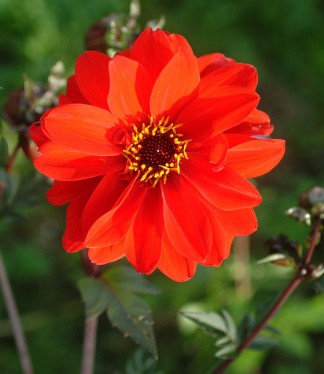Miscellaneous
Group 10 - Miscellaneous Dahlias
Any dahlias which do not fall into type 1 – 9 inclusive and type 11, 12,13 & 14 e.g. Thistle Dahlias, etc. This group includes species dahlias.
Dahlias that do not fall into formally recognised groups such as single, cactus, semi-cactus, waterlily, ball, pompon, decorative, anemone and collerette will come under this category. Orchid dahlias, peony-flowered, chrysanthemum-flowered, Lilliput and star dahlias will all be classified as being part of this group as they do not meet the criteria for the other types. Many enthusiasts favour this group as it can give a degree of freedom, with all sorts of new cultivars being created which naturally brings great excitement.
Bishop of Llandaff – this is a peony shaped dahlia which has semi-double, bright red blooms. The petals overlap and encircle a central disc. A ring of bright yellow anthers surrounds the disc and serves to make this a visually stunning flower which is about 5 – 6 cm or 2 – 3 inches across. The plant grows to a height of 1.1 metre or 3 ft 6 inches.
Jescot Julie – this is an example of an orchid flowered dahlia. The bloom has loose petals that are burnt orange, slightly curved upwards and with a darker, plum coloured underside. The flowers are 6 – 8 cm or 2 – 3 inches wide, and the plant grows to an overall height of 1 metre or 3 ft.
Freya’s Thalia – this is an example of a Lilliput dahlia. It grows to a diminutive 75 cm (30 inches) in height and consists of a single, deep red coloured flower with an orange centre that is 6 cm (about 3 inches) across.
Pictured - Gamburg
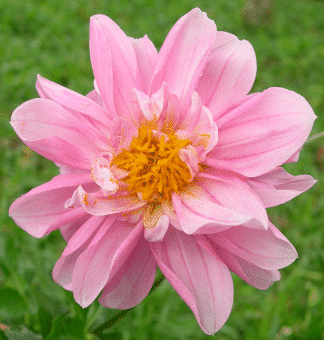
Group 11- Fimbriated Dahlias
Fimbriated dahlias have blooms where the tips of the ray florets should be evenly split or notched into two or more divisions, uniformly throughout the bloom to create a fringed overall effect. The petals may be flat, involute, revolute, straight, incurving or twisted
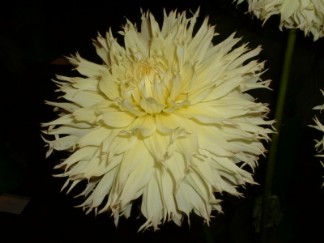
Group 12 – Star Dahlias
Star dahlias have blooms with a single outer ring of florets surrounding the disc. Ray florets are uniformly either involute or revolute.
Pictured - TAHOMA HOPE
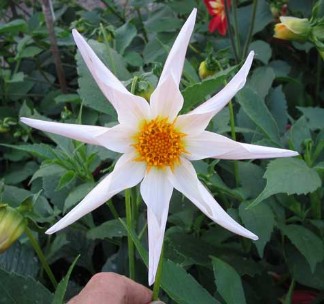
Group 13 – Double Orchid Dahlias
Double Orchid dahlias have fully double blooms showing no disc and have triangular centres. Ray florets are narrowly lance shaped and either involute or revolute.
Pictured - Pink Giraffe
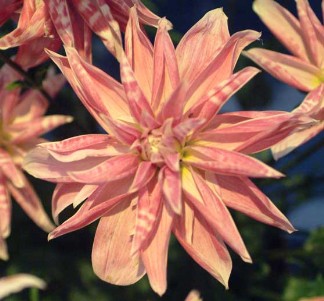
Group 14 - Paeony Dahlias
Paeony dahlias have multiple outer rings of ray florets surrounding a disc, ray florets are flat or slightly involute at base and are flat or are to some extent revolute
Pictured - Bishop of Llandaff
